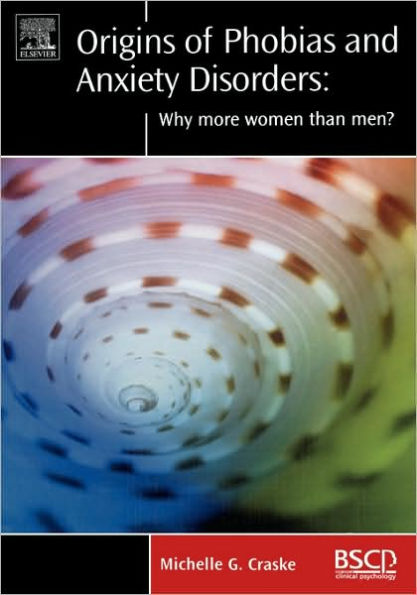The first title to be published in the BRAT Series in Clinical Psychology, this new book will present a critical analysis of the theories and empirical evidence to date regarding the origins of phobias and anxiety disorders, and the reasons why more women than men suffer from them. The book moves from a discussion of non-specific temperament to specific risk factors for each anxiety disorder, assuming a hierarchical etiological model throughout. At each level of analysis, the issue of gender differences is addressed. For example, broad temperamental factors such as traits of negative affectivity and poor emotional regulation are reviewed in terms of their relevance to the group of disorders with which anxiety disorders tend to cluster, such as depression and substance abuse. Biological contributions are covered, along with early life experiences including parenting styles and expectations, and early stressors. The components of anxiety - hypervigilance, threat-laden belief systems and avoidant style - are presented as being common across the anxiety disorders and self-perpetuating. Types of ongoing life experiences that influence the development of one type of anxiety disorder over another are reviewed. Each anxiety disorder is then addressed in detail after considering general principles of fear acquisition and persistence.
The first title to be published in the BRAT Series in Clinical Psychology, this new book will present a critical analysis of the theories and empirical evidence to date regarding the origins of phobias and anxiety disorders, and the reasons why more women than men suffer from them. The book moves from a discussion of non-specific temperament to specific risk factors for each anxiety disorder, assuming a hierarchical etiological model throughout. At each level of analysis, the issue of gender differences is addressed. For example, broad temperamental factors such as traits of negative affectivity and poor emotional regulation are reviewed in terms of their relevance to the group of disorders with which anxiety disorders tend to cluster, such as depression and substance abuse. Biological contributions are covered, along with early life experiences including parenting styles and expectations, and early stressors. The components of anxiety - hypervigilance, threat-laden belief systems and avoidant style - are presented as being common across the anxiety disorders and self-perpetuating. Types of ongoing life experiences that influence the development of one type of anxiety disorder over another are reviewed. Each anxiety disorder is then addressed in detail after considering general principles of fear acquisition and persistence.

Origins of Phobias and Anxiety Disorders: Why More Women than Men?
312
Origins of Phobias and Anxiety Disorders: Why More Women than Men?
312Hardcover

Product Details
| ISBN-13: | 9780080440323 |
|---|---|
| Publisher: | Elsevier Science |
| Publication date: | 11/13/2003 |
| Series: | BRAT Series in Clinical Psychology |
| Pages: | 312 |
| Product dimensions: | 6.50(w) x 9.45(h) x (d) |
